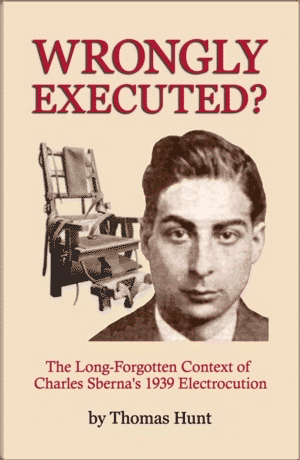A timeline of noteworthy events dicussed in 'Wrongly Executed: The Long-Forgotten Context of Charles Sberna's 1939 Electrocution.'
- 1885 03 13 Giuseppe Sberna, future anarchist leader and father of Charles Sberna, is born in Sicily to Calogero and Maria D'Amico Sberna.
- 1887 First-known Italian American anarchist organization, Circolo Comunista Anarchica Carlo Cafiero, is formed in Orange Valley, New Jersey, fifteen miles south of Paterson.
- 1893 03 08 Terranova-Morello family arrives in New York to join Giuseppe Morello. Morello soon becomes boss of bosses of the American Mafia.
- 1894 Italian anarchist Luigi Galleani is convicted in Italy of participating in an association of malefactors. He is sentenced to three years in Pantelleria Island prison.
- 1897 Italian-American anarchist Gaetano Bresci marries Sophie Knieland in New Jersey.
- 1900 About 1900, Luigi Galleani escapes from Pantelleria Island, travels to Egypt and England, then settles in United States.
- 1900 02 02 An international anarchist organization selects Giuseppe Pessina of New Jersey to attempt the assassination of Italian King Umberto I, according to a confession later written by Pessina.
- 1900 05 04 Gaetano Bresci resigns from his silk mill job without stating a cause.
- 1900 05 17 Gaetano Bresci leaves U.S. to return to Italy.
- 1900 06 30 Giuseppe Morello is acquitted of counterfeiting charges. His codefendant, Calogero Meggiore, is convicted and sentenced to six years in prison.
- 1900 07 17 Carbone Speranza kills Giuseppe Pessina in Paterson, New Jersey, and then kills himself. He leaves a letter indicating that he killed Pessina, an oppressive dye works foreman, because he was unable to fulfill an anarchist mission to assassinate King Umberto of Italy.
- 1900 07 29 World becomes aware of anarchist threat following the assassination of King Umberto I by Gaetano Bresci.
- 1900 07 31 Members of the anarchist Gruppo Diritto all'Esistenza, headquartered at 351 Market Street in Paterson, New Jersey, are seen celebrating the assassination of Italian King Umberto I. Some members make threats against other political leaders, including U.S. President William McKinley.
- 1900 08 02 Italian authorities move assassin Gaetano Bresci from Monza to Milan, where trial is scheduled for end of the month.
- 1900 08 29 In a trial lasting a single day, Gaetano Bresci is convicted of murdering King Umberto I. Bresci admits the assassination, says he is indifferent to the sentence of life imprisonment.
- 1901 05 21 Gaetano Bresci is found dead in his prison cell on the island of Santo Stefano. Authorities claim he committed suicide. Bresci's wife and anarchist allies in U.S. insist he was murdered.
- 1901 09 06 U.S. President William McKinley is shot and seriously wounded by anarchist Leon Czolgosz at the Pan-American Exposition in Buffalo.
- 1901 09 14 U.S. President William McKinley dies of blood poisoning resulting from his gunshot wounds.
- 1901 10 29 Anarchist assassin Leon Czolgosz is executed in the electric chair at New York's Auburn Prison. His remains are destroyed by acid and buried in an unmarked grave.
- 1902 04 Italian silk dyeing workers strike against their Paterson employers.
- 1902 05 22 U.S. Secret Service arrests suspected members of the Frauto gang of coin counterfeiters, including Vito Cascio Ferro. The case against Cascio Ferro proves weak, and he is released.
- 1902 06 18 Strike meeting in Paterson becomes a riot. State militia sent to restore order. Authorities arrest William MacQueen and Rudolf Grossman and seek a recent arrival in U.S., Luigi Galleani.
- 1902 09 25 Giuseppe Sberna, 16, crosses the Atlantic from Italy to settle with maternal relatives in New York City.
- 1903 04 13 Secret Service agents observe a stranger in the presence of Morello Mafia members in New York.
- 1903 04 14 Barrel murder victim is discovered at Avenue D and East 11th Street in New York City. Secret Service agents advise police that the victim is the stranger they saw with Morello Mafiosi. Police arrest known Morello gangsters, including Giuseppe Morello and Ignazio Lupo. They are unable to locate Vito Cascio Ferro.
- 1903 04 20 Authorities learn that the Barrel Murder victim was Benedetto Madonia of Buffalo, New York, brother-in-law of imprisoned Morello gang counterfeiter Giuseppe DePrima.
- 1903 06 06 Luigi Galleani and Carlos Abate launch Cronaca Sovversiva newspaper from Barre, Vermont.
- 1903 10 03 Shots are fired at Barre, Vermont, speech by visiting socialist editor Giacinto Menotti Seratti. Local stone carver Elia Corti is killed.
- 1903 12 22 Mafia leader Ignazio Lupo marries Salvatrice Terranova, half-sister of American Mafia boss of bosses Giuseppe Morello.
- 1905 Luigi Galleani publishes an anarchist terrorism manual compiled by chemistry professor Ettore Molinari.
- 1906 08 25 Giuseppe Sberna, an anarchist printer, marries Domenica "Minnie" Bonanno in New York City.
- 1907 01 10 Authorities locate anarchist editor Luigi Galleani in Barre, Vermont. Galleani is arrested and returned to Paterson, New Jersey, to stand trial on charges related to the 1902 silk workers riot.
- 1907 05 Following a hung jury, Luigi Galleani is released and returns to Barre, Vermont.
- 1909 02 09 New York Police Commissioner Theodore Bingham announces the creation of a privately funded cover detective unit answerable to him alone. He states that the unit will be led by Lieutenant Joseph Petrosino, formerly of the Italian Squad of detectives. The news causes the press to speculate on the location of Petrosino, who has not been seen for more than a week. Bingham fails to suppress speculation that Petrosino is on a secret mission to Italy.
- 1909 02 21 Lieutenant Joseph Petrosino arrives in Genoa, Italy, on what was supposed to have been a secret mission to combat the flow of Italian organized criminals into the U.S. The press exposed the mission a week before Petrosino's arrival.
- 1909 03 05 Charles Sberna is born to Giuseppe and Domenica Sberna in New York City.
- 1909 03 11 Lieutenant Joseph Petrosino, traveling through Italy on a secret mission to gain evidence against immigrant outlaws and to halt the flow of organized criminals into the U.S., notes in his journal that he already has encountered criminals who recognized him from New York.
- 1909 03 12 Lieutenant Joseph Petrosino is murdered in Palermo, Sicily, while engaged in a secret mission to acquire evidence against immigrant outlaws and to halt the flow of Italian organized criminals to the United States.
- 1909 04 03 Italian authorities arrest Mafioso Vito Cascio Ferro at Bisacquino, Sicily, suspecting him of involvement in the recent murder of visiting New York Police Lieutenant Joseph Petrosino. Police search Cascio Ferro's home and find a letter written to him by Sophie Knieland of New Jersey, widow of anarchist assassin Gaetano Bresci.
- 1909 07 01 New York Police Commissioner Theodore Bingham is dismissed from his position. Bingham's opponents publicly criticize him for his creation of a privately funded force of secret police and for mishandling the clandestine mission of the late Lieutenant Joseph Petrosino.
- 1909 09 06 Secret Service agent William Flynn meets with convicted counterfeiter Vincenzo Battaglia at Atlanta Federal Prison. Battaglia provides Flynn with information on the counterfeiting operations of Mafia boss Giuseppe morello.
- 1909 10 13 Anarchist leader Francisco Ferrer is executed by firing squad in Spain. Ferrer is known as the founder of the failed Modern School, which exposed students to leftist ideals. His arrest and execution follows the Tragic Week of violent clashes between the royal Spanish military and working class protestors. Ferrer becomes an inspiration for a Modern School - Ferrer Center organization in the United States.
- 1909 11 15 U.S. Secret Service agents and detectives from the New York Police Department raid locations linked with the Giuseppe Morello Mafia organization and its counterfeiting racket. Morello and a dozen other men are arrested. More than a thousand counterfeit two-dollar bills are found. Agents also secure correspondence between Morello and Mafia organizations in other regions of the U.S.
- 1910 01 04 Secret Service agents arrest Antonio Comito for participating in the printing of counterfeit currency for the Mafia organization of Giuseppe Morello. Comito agrees to assist the Secret Service investigation and becomes the key witness in the case against Morello and his associates.
- 1910 01 26 Giuseppe Morello, Ignazio Lupo and six other men are put on trial in New York federal court for manufacturing counterfeit currency and conspiring to pass counterfeit.
- 1910 02 19 A jury convicts Giuseppe Morello, Ignazio Lupo and six codefendants of counterfeiting charges. Morello is sentenced to twenty-five years in prison. Lupo is sentenced to thirty years in prison. The other defendants are sentenced to between fifteen and eighteen years. All are taken to Atlanta Federal prison.
- 1912 02 10 Luigi Galleani's Cronaca Sovversiva begins publication from its new location, Lynn, Massachusetts.
- 1914 03 04 Frank Tannenbaum's Army of the Unemployed is arrested after storming into St. Alphonsus Church in Manhattan and demanding food and lodging.
- 1914 03 27 Magistrate John A.L. Campbell sentences Frank Tannenbaum to a year in prison and $500 fine.
- 1914 04 20 State and federal troops attack a tent city of striking coal miners and their families at Ludlow, Colorado. Dozens of men, women and children are killed. Mine owner John D. Rockefeller, Jr., is blamed.
- 1914 04 29 Socialist author Upton Sinclair organizes pickets against John D. Rockefeller, Jr., in New York City.
- 1914 05 23 Umberto Valente, gunman for new Mafia boss of bosses Salvatore D'Aquila, murders uncooperative East Harlem boss Fortunato LoMonte.
- 1914 05 22 IWW leader Arthur Caron attempts to bring picketers to the home estate of John D. Rockefeller, Jr., at Pocantico Hills, New York. Guards turn him away. Caron seeks permission from the Village of North Tarrytown to hold a large protest meeting. His request is denied.
- 1914 05 26 IWW leader Arthur Caron and Free Silence League leader Leonard Abbott request a permit for a protest meeting in North Tarrytown. They are refused.
- 1914 05 30 Arthur Caron and 11 other IWW members are arrested for publicly denouncing John D. Rockefeller, Jr., at Tarrytown's Fountain Square. They are charged with speaking without a permit and blocking traffic.
- 1914 06 12 Trial of Arthur Caron and other IWW members is scheduled for July 5. The defendants are released on bail.
- 1914 07 03 Alexander Berkman calls meeting of anarchists at Ferrer Center to discuss ways of supporting Arthur Caron and the other Tarrytown defendants.
- 1914 07 04 Arthur Caron and three colleagues are killed when a bomb they are working on explodes at 1626 Lexington Avenue in East Harlem. Top three stories of the six-story apartment building are demolished.
- 1914 07 05 Police swarm known anarchist gathering places, collect information, treat members roughly.
- 1914 07 11 Twelve thousand people pack Union Square for a memorial service conducted by Alexander Berkman.
- 1914 07 28 Austria-Hungary Archduke Franz Ferdinand is assassinated by a Bosnian-Serb nationalist. War in Europe soon follows.
- 1914 10 13 Marking the fifth anniversary of the execution of Spanish anarchist Francisco Ferrer, New York anarchists explode bombs at St. Patrick's Cathedral and St. Alphonsus Church.
- 1914 11 11 Anarchist bomb explodes at Bronx Court House, injuring four people.
- 1914 11 14 Anarchist bomb is discovered beneath the seat of Magistrate John A.L. Campbell in the Tombs Police Court. Campbell had sentenced Frank Tannenbaum to a term in prison.
- 1915 03 21 In response to police aggression toward the anarchist organization, Bresci Circle (named in honor of Gaetano Bresci), East Harlem anarchist leader Giuseppe Sberna calls for a protest meeting against the New York Police Department.
- 1915 03 02 Undercover Detective Amedeo Polignani exposes plot of Frank Abarno and Carmine Carbone to bomb St. Patrick's Cathedral.
- 1915 03 07 Police officers attack leaders of the anarchist Bresci Circle in East Harlem. Valentino Campanella requires hospitalization for his injuries.
- 1915 04 13 Jury convicts Frank Abarno and Carmine Carbone of bomb conspiracy but recommends mercy.
- 1915 04 19 Judge Charles C. Nott sentences Frank Abarno and Carmine Carbone to six-to-twelve years at Sing Sing Prison. Bresci Circle anarchists raise funds for an appeal.
- 1915 09 04 In a signed article published in Cronaca Sovversiva, Giuseppe Sberna and other anarchist leaders denounce the growing military conflict in Europe as a war of conquest and shady deals. They call instead for a class war that could overthrow those who exploit the working classes.
- 1916 09 07 East Harlem Mafia leader Nicholas Terranova and bodyguard Charles Ubriaco are murdered in Brooklyn on their way to a peace conference with local Camorra leaders.
- 1917 03 15 Czar Nicholas II abdicates as Russian people rebel against his authority. Grand Duke Michael Alexandrovich is named as his successor.
- 1917 03 16 Michael Alexandrovich renounces his claim to the Russian throne, ending the Romanov dynasty. A weak provisional government is assembled by the executive committee of the Duma legislature.
- 1917 06 15 Local police and federal agents raid anarchist newspaper offices in Massachusetts and New York. Cronaca Sovversiva editor Luigi Galleani, of Wrentham, Massachusetts, is arrested and charged with conspiracy. Emma Goldman and Alexander Berkman of the Mother Earth publication in New York City are arrested and charged with conspiracy against the federal conscription law. Agents seize documents, including lists of the names and addresses of anarchist-minded individuals in the U.S. Galleani is locked up in Boston. Goldman and Berkman are held at the Tombs in New York.
- 1918 03 03 The new Russian Bolshevik government of Vladimir Lenin accepts a harsh treaty from Germany and exits the Great War. The treaty costs Russia most of its industrial strength and agricultural land and about one-third of its former population. Russia's former allies, England and the United States, begin supporting counterrevolutionary forces in Russia, hoping to reopen the Eastern Front against Germany.
- 1919 04 28 A mail bomb explodes at the home of U.S. Senator Thomas W. Hardwick, severely injuring a household servant. A similar package is detected on its way to the Mayor of Seattle, Washington. The U.S. Postal Services launches an investigation and discovers that twenty-nine bombs were working their way through the mails to U.S. officials and businessmen. All the packages were scheduled to arrive at their destinations around May 1.
- 1919 06 02 Anarchist bombs explode in Boston and Newtonville, Massachusetts; Paterson, New Jersey; New York City; Pittsburgh; Philadelphia; Cleveland and Washington, D.C. The New York bomb destroys the home of Judge Charles Nott Jr., who had sentenced Frank Abarno and Carmine Carbone. The Washington, D.C., bomb rips the front door off the home of Attorney General A. Mitchell Palmer and tears to shreds the body of the anarchist who delivers it.
- 1919 06 03 Former Secret Service chief William Flynn is appointed leader of the Bureau of Investigation. Flynn is assigned the task of identifying and obtaining evidence against the organizers of recent anarchist bombings.
- 1920 01 08 The Bureau of Investigation determines that a Boston-area building contractor provided funding for the recent gathering of U.S. anarchist leaders, including Giuseppe Sberna, Andrea Ciofalo, Mario Buda, Nicola Sacco and Bartolomeo Vanzetti, across the border in Mexico.
- 1920 01 05 BOI informant Eugene Ravarini reports on a recent meeting with Giuseppe Sberna in rooms over Nicholas Morgillo's print shop, 305 East 115th Street.
- 1920 01 19 BOI informant Eugene Ravarini meets with Giuseppe Sberna in New York City.
- 1920 02 14 John Edgar Hoover, young leader of the Justice Department's Anti-Radical Division, leads federal agents, American Legion volunteers and select members of the press on raids of locations linked to the L'Era Nuova anarchist organization. Twenty-nine people are arrested.
- 1920 02 15 A number of foreign radicals are transported to Ellis Island and confined there. John Edgar Hoover, leader of the Justice Department's Anti-Radical Division, interviews prisoner Ludovico Caminita and finds him willing to act as an informant against his anarchist colleagues.
- 1920 03 18 Giuseppe Morello is released from Atlanta Federal Prison upon the expiration of his reduced counterfeiting sentence.
- 1920 03 16 Informant later learns that this is the date Giuseppe Sberna left New York City aboard the S.S. Canopic to return to Italy.
- 1920 03 16 BOI Special Agent Joseph Barbara is assigned to locate Giuseppe Sberna. Barbara checks suspected addresses at 305 East 106th Street, 311 East 106th Street and 311 East 100th Street.
- 1920 03 17 BOI Special Agent Joseph Barbara checks records of public schools in an effort to locate Sberna family.
- 1920 03 18 BOI Special Agent Joseph Barbara examines records of Health Department, Marriage Bureau and Board of Elections in an effort to locate Sberna family.
- 1920 03 19 BOI Special Agent Joseph Barbara visits Franklin Press Union No. 23 in an effort to locate Giuseppe Sberna. Barbara finds an address for Sberna, 284 Second Avenue, but later learns there is no such place.
- 1920 03 30 Giuseppe Sberna reaches Italy and is immediately arrested as a suspicious person.
- 1920 03 25 Boston-area anarchist Bartolomeo Vanzetti travels to New York City and meets with the Italian Committee for Political Victims - Carlo Tresca, Walter Nelles and Luigi Quintiliano - to discuss what can be done for Roberto Elia and Andrea Salsedo. Elia and Salsedo have been held for weeks at Bureau of Investigation offices in Manhattan. Committee members instruct Vanzetti to return to Boston and tell his radical friends to brace for additional federal raids.
- 1920 04 05 An informant tells BOI Special Agent Joseph Barbara that Giuseppe Sberna left the U.S. for Italy on March 16. BOI agents can find no evidence to support this information.
- 1920 04 05 Giuseppe Sberna is released by authorities and heads to Santa Teresa Riva in Messina, Sicily. He writes to his wife in New York to tell her of his plans.
- 1920 04 06 BOI agents check Pier 97 N.R. (Hudson River) for Giuseppe Sberna.
- 1920 04 07 Giuseppe Sberna writes to his wife in New York, discussing plans for her to join him in Italy.
- 1920 04 15 A robbery and murders occur in South Braintree, Massachusetts. Authorities believe the crimes were committed by a group of local anarchists, which includes Nicola Sacco, Bartolomeo Vanzetti, Mario Buda and Riccardo Orciani.
- 1920 05 03 Radical printer Andrea Salsedo falls to his death after crashing through the fourteenth-floor window of the federal building in Manhattan. U.S. officials say Salsedo committed suicide. He had been confined to the Bureau of Investigation offices for two months.
- 1920 09 16 Horse-drawn cart filled with explosives and iron weights blows up on New York's busy Wall Street. Thirty-eight people are killed. Hundreds are wounded. Anarchist leaflets are found nearby.
- 1920 09 17 Official statements link the Sept. 16 Wall Street bombing with earlier bombings carried out by anarchists.
- 1921 04 12 BOI Special Agent J.F. Loren learns that Giuseppe Sberna is planning to reenter the U.S. and may do so through Mexico.
- 1921 10 29 President Warren Harding grants Ignazio Lupo a conditional pardon, ending parole restrictions and allowing the Mafia leader to exit the country for a visit to Sicily.
- 1921 11 08 Parole restrictions on Ignazio Lupo are officially lifted, allowing him to exit the U.S. for a visit to Sicily.
- 1921 11 21 Mafia leader Ignazio Lupo leaves the U.S. to visit Sicily. His wife and three children remain behind in New York City.
- 1922 05 09 East Harlem Mafia leader Vincent Terranova is killed early in the day. Later, Mafioso Silvio Tagliagambe is mortally wounded in downtown Manhattan. Rising underworld figure Giuseppe Masseria is believed responsible for the shooting of Tagliagambe.
- 1922 08 08 Umberto Valente, gunman for Mafia boss of bosses Salvatore D'Aquila, attempts to murder Giuseppe Masseria. Masseria reportedly dodges bullets fired at close range and escapes with his life.
- 1922 08 11 Umberto Valente, gunman for Mafia boss of bosses Salvatore D'Aquila, is shot to death in Manhattan at a supposed peace conference with allies of Mafioso Giuseppe Masseria.
- 1926 John H.A. Wilson joins the New York Police Department. He is the son of NYPD Lieutenant George Wilson.
- 1928 10 10 Mafia boss of bosses Salvatore D'Aquila is shot and killed by unidentified gunmen in Manhattan. Giuseppe Masseria soon takes over as supreme leader of the U.S. Mafia.
- 1929 12 07 A party is held in honor of Magistrate Albert H. Vitale, instrumental in the reelection success of Tammany Hall Democrat Jimmy Walker to the position of mayor. Attendees at the event include political figures and members of the local underworld.
- 1929 12 08 As a party at the Roman Gardens Restaurant in the Bronx continued into the early morning hours, several gunmen intruded and took cash and jewelry from the guests. Investigators discovered that the party was for Magistrate Albert H. Vitale and the guests included gangsters Ciro Terranova, Joseph and James Catania, John and James Savino, Paul Marchione and Daniel Iamascia. One guest, a New York police detective, surrendered his service revolver to the gunmen. Later in the day, the valuables and the firearm were mysteriously returned through the Tammany-affiliated Tepecano Club.
- 1930 02 26 Mafia boss Gaetano Reina of the Bronx is shot to death. New boss of bosses Giuseppe Masseria is believed responsible. Masseria endorses his close ally Joseph Pinzolo as Reina's replacement.
- 1930 05 31 Detroit Mafia leader Gaspare Milazzo, native of the Sicilian town of Castellammare del Golfo, is murdered on orders from U.S. Mafia boss of bosses Giuseppe Masseria. Masseria endorses Cesare Lemare as leader in Detroit. The Milazzo murder is regarded as the beginning of the U.S. Mafia's Castellammarese War.
- 1930 06 13 Vito Bonventre, a leading Castellammarese Mafioso in Brooklyn, is shot to death at his home. Giuseppe Masseria endorses Joseph Parrino as boss of the Brooklyn Castellammarese organization.
- 1930 08 15 Gunmen working for Castellammarese Mafia leader Salvatore Maranzano burst into Giuseppe Morello's office in Manhattan and shoot Morello and a visitor to death. Morello, one-time boss of bosses, had been serving as top adviser to reigning boss of bosses Giuseppe Masseria.
- 1930 09 05 Rebellious elements within a Bronx crime family murder boss Joseph Pinzolo, an ally of Giuseppe Masseria.
- 1930 10 08 Ruggiero Consiglio is murdered. Authorities suspect Ignazio Lupo of involvement.
- 1930 10 23 Chicago Mafioso Joseph Aiello is murdered by gunmen working for underworld figure Al Capone, an ally of New York's Giuseppe Masseria.
- 1930 11 05 Gunmen working for Castellammarese Mafia leader Salvatore Maranzano shoot and kill Al Mineo and Steve Ferrigno at a Bronx apartment building. Mineo and Ferrigno, leader of a crime family with assets in the Bronx and Brooklyn, are trusted allies of Giuseppe Masseria. Following their deaths, their crime family aligns with Maranzano.
- 1931 02 03 Joseph Catania, a loyal ally of Giuseppe Masseria, is shot to death on Belmont Avenue in the Bronx by Salvatore Maranzano gunmen.
- 1931 04 15 Betrayed by key men in his own organization, Giuseppe Masseria is murdered during a lunch meeting at Coney Island.
- 1931 04 20 Charles Sberna and Salvatore Gati are arrested together and charged with grand larceny. They are discharged in Magistrate's Court.
- 1931 09 10 Mafia boss of bosses Salvatore Maranzano is shot and stabbed to death by assassins working for Charlie Luciano.
- 1932 05 13 Charles Sberna is arrested for assault and robbery. He is later discharged in Magistrat's Court.
- 1933 01 19 Following a visit to Europe, Charles Sberna boards the S.S. Berengaria in Cherbourg, France, for the trip back to the United States.
- 1933 01 25 Assistant District Attorney Thomas Dewey obtains an indictment against Dutch Schultz and several of his underlings for conspiracy to defraud the U.S. government and willful failure to file tax returns.
- 1933 01 25 Charles Sberna returns to New York after a trip to Europe.
- 1933 03 17 Salvatore Gati and Charles Sberna surrender to authorities after being indicted for rape and assault.
- 1933 03 20 At arraignment, Salvatore Gati and Charles Sberna plead not guilty to rape and assault charges. Bail is set at $1,500 each.
- 1933 03 23 Clorinda Ponticarro of East 114th Street provides bail for the release of Charles Sberna and Salvatore Gati. The two men were held following March 20 arraignment on rape and assault charges.
- 1933 04 12 Trial of Salvatore Gati and Charles Sberna on rape and assault charges is postponed to April 17.
- 1933 04 17 Trial of Salvatore Gati and Charles Sberna on rape and assault charges is again postponed, this time to April 19.
- 1933 04 19 An additional postponement of the trial of Salvatore Gati and Charles Sberna on rape and assault charges occurs. Trial date is tentatively set for April 26.
- 1933 04 26 Judge William Allen of General Sessions Court in New York City postponed the trial of Salvatore Gati and Charles Sberna on rape and assault charges until May.
- 1933 04 29 Gunmen force employees of a New York shoe company into a waiting taxicab and attempt to rob them of company money at gunpoint. Police are alerted. The gunmen flee. Charles Sberna and Salvatore Gati are later apprehended for the attempted robbery and assault. They are believed to have been working with a third unidentified man.
- 1933 05 15 Charles Sberna and Salvatore Gati are indicted by a grand jury for first degree attempt to commit grand robbery and first degree attempt to commit grand larceny. The two men are free on bail pending trial on rape and assault charges.
- 1933 06 06 Prosecutors provide Charles Sberna and Salvatore Gati with a generous plea deal. Pending charges of rape, assault, attempted grand larceny and attempted grand robbery are condenced into a single count of second-degree assault. The two men enter their guilty pleas.
- 1933 06 15 Judge William Allen of General Sessions Court in New York sentences Charles Sberna and Salvatore Gati to between two and a half years and five years in state prison on their second-degree assault conviction.
- 1935 02 16 Mafioso Ciro Terranova is arrested as he enters New York City. He is initially charged with vagrancy but later released. New York Mayor Fiorello LaGuardia has pledged that Terranova will be arrested every time he is seen within the city limits.
- 1935 04 27 A Syracuse, New York, federal court jury cannot reach a verdict in the tax case against Dutch Schultz.
- 1935 06 17 A New York County grand jury meets with Governor Herbert Lehman to request a special prosecutor investigate political connections to bail bond racketeers. The grand jury argued that it could not work effectively with District Attorney William Copeland Dodge, a Tammany Hall Democrat.
- 1935 06 24 New York Governor Herbert Lehman writes to New York County District Attorney William Copeland Dodge, asking him to appoint a special prosecutor from a short list of nominees to investigate the relationship between political figures and bail bond racketeers.
- 1935 06 30 New York Governor Herbert Lehman, advised that none of the men he recommended as New York County special prosecutor is able or willing to accept the role, writes to District Attorney William Copeland Dodge to insist upon the appointment of Thomas Dewey to the position of special prosecutor. Lehman says the state attorney general will make the appointment if Dodge fails to do so.
- 1935 08 01 A Malone, New York, jury acquits gangster Dutch Schultz of federal tax charges.
- 1935 10 23 Mafia-affiliated gunmen enter the Palace Chop House restaurant in Newark, New Jersey, and fatally shoot Dutch Schultz and several of his men.
- 1936 05 07 Governor Herbert Lehman writes to President Franklin Roosevelt asking that the commutation of sentence granted by the Harding Administration to Ignazio Lupo be revoked and that Lupo be returned to prison. Lehman notes that he is exceedingly interested in the Lupo case.
- 1936 05 New York Governor Herbert Lehman writes to President Franklin Roosevelt about Mafioso Ignazio Lupo.
- 1936 07 07 Governor Herbert Lehman writes to President Franklin Roosevelt a second time about revoking the presidential commutation granted to Ignazio Lupo and returning Lup to federal prison. Lehman states he is most deeply interested in the case.
- 1936 07 10 Attorney General Homer Stille Cummings writes to President Franklin Roosevelt recommending the revocation of the presidential commutation granted to Ignazio Lupo during the Harding Administration.
- 1936 07 14 In the early morning hours, federal marshals, following an order of President Franklin Roosevelt, apprehend Ignazio Lupo and begin his transport back to Atlanta Federal Prison.
- 1936 07 16 Charles Sberna reports his church wedding ceremony and new home address to his parole officer.
- 1936 09 23 Salvatore Gati is released on parole from Sing Sing Prison. He served a prison sentence for second-degree assault.
- 1936 09 24 Charles Sberna is released on parole from Sing Sing Prison. He served a prison sentence for second-degree assault.
- 1936 12 10 Charles Sberna is interrogated by parole officers. He admits that he has been lying to them about his employment.
- 1936 12 12 Parole officers contemplate sending Charles Sberna back to Sing Sing Prison. They know he has been lying about his activities and his employment. A warrant for his arrest and imprisonment is obtained but not executed.
- 1937 03 16 Charles Sberna reports to parole officers that he and his mother and his sister have moved from the Bronx to an East 106th Street apartment in East Harlem. Parole officers visiting the new address find only Charles Sberna there.
- 1937 03 18 Charles Sberna brings fiancee Carmela Morello to a visit with his parole officer. They two announced that they will soon be married.
- 1937 03 19 Charles Sberna and Carmela Morello are married in a civil ceremony at City Hall.
- 1937 04 10 Gunmen attempting to rob the Café Boulevard restaurant in Manhattan fatally shoot Police Detective Michael J. Foley.
- 1937 04 20 Charles Sberna brings a marriage certificate to a meeting with his parole officer to show that he was recently wed to Carmela Morello.
- 1937 07 11 Charles Sberna and Carmela Morello Sberna, already married in a civil ceremony months earlier, have a religious wedding ceremony at St. Anne Catholic Church on East Twelfth Street. Following the ceremony, the newlyweds move into an apartment with Carmela's mother, Nicolina Morello.
- 1937 09 20 American Legion convention begins in New York City. A day-long parade and enormous crowds paralyze the city and overburden the police force.
- 1937 09 21 Louis Rudisch purchases $11,000 worth of platinum. He decides not to store it at his downtown Manhattan metals refining company.
- 1937 09 22 Salvatore Gati and two other men plan to raid the Rudisch company. American Legion convention in New York City concludes.
- 1937 09 23 Three men burst into the Rudisch company, hold employees at gunpoint. Officer John Wilson is shot to death when he enters the offices. One of the gunmen is severely burned by spilled molten wax.
- 1937 09 24 Charles Sberna takes his friend Salvatore Gati to the office of Dr. Achille Baratta to be treated for burns to his hand.
- 1937 09 24 Charles Sberna takes his friend Salvatore Gati to the office of Dr. Achille Baratta. Gati obtains treatment for second-degree burns on his left hand.
- 1937 09 25 Salvatore Gati returns to Dr. Baratta for additional treatment.
- 1937 09 27 Salvatore Gati receives additional treatment from Dr. Baratta. NYPD holds Inspector's Funeral for Officer John H.A. Wilson following High Requiem Mass at Our Lady Queen of Peace Church in New Dorp.
- 1937 10 05 Charles Sberna and Salvatore Gati are arrested as they report to their probation officer. They are charged with the Sept. 23 murder of Officer John Wilson.
- 1937 10 05 Charles Sberna and Salvatore Gati are arrested as they report to the parole officer. The two men are accused of participating in an attempted robbery that led to the shooting death of Police Officer John H.A. Wilson.
- 1937 10 06 Charles Sberna and Salvatore Gati are arraigned before Magistrate Alexander Brough on charges of homicide and attempted robbery. Police continue to search for a third man involved in the crimes.
- 1937 10 15 A New York County grand jury returns first-degree murder indictments against Charles Sberna and Salvatore Gati. They are charged with causing the death of Police Officer John H.A. Wilson during an attempted robbery.
- 1937 10 20 Charles Sberna and Salvatore Gati officially plead not guilty in response to their first-degree murder indictments.
- 1938 01 28 Five gunmen attempt a robbery at Goodman Edelstein’s pawnshop in the Bronx. Police interrupt them. Police Sergeant David Kilpatrick and robber Martin Lavin are fatally wounded in an exchange of gunfire. George (Bullets) DeRenna is arrested. Three accomplices escape.
- 1938 02 07 George DeRenna goes to trial for the murder of Sergeant Kilpatrick.
- 1938 02 11 Jury convicts George DeRenna but recommends mercy.
- 1938 02 18 Longtime New York Mafioso Ciro Terranova is admitted to Columbus Hospital following a paralyzing stroke.
- 1938 02 20 Ciro Terranova, longtime New York Mafia figure, dies at Columbus Hospital following a stroke. He was the last of the Morello-Terranova brothers to die and the only one to die of natural causes.
- 1938 03 03 George (Bullets) DeRenna is sentenced to life in prison for the murder of Sergeant David Kilpatrick.
- 1938 04 26 Charles Sberna and Salvatore Gati meet an old acquaintance, John (Little Jeff) Lepore while all are held at Tombs Prison.
- 1938 04 Five men, including Isidore (Beansy) Zimmerman, are convicted of the murder of Detective Michael J. Foley. They all are sentenced to death.
- 1938 05 13 Louis Rudisch purchases $22,000 of platinum and iridium from Amtorg Trading Corporation allegedly on behalf of J. Rogers. Checks provided by Rudisch as payment are found to be forgeries.
- 1938 05 14 Louis Rudisch is arrested and charged with larceny and forgery.
- 1938 05 24 Rudisch larceny and forgery case comes up before Magistrate Harry Andrews. At prosecutor’s request, the charges are dismissed and Rudisch is freed.
- 1938 06 15 As murder trial of Charles Sberna and Salvatore Gati is scheduled to begin, Samuel Leibowitz attempts to withdraw as Gati’s attorney. Judge James Wallace insists that Leibowitz provide the defense for Gati.
- 1938 06 17 A jury is selected for the trial of Charles Sberna and Salvatore Gati for first degree murder of Police Officer Wilson.
- 1938 06 23 Salvatore Gati refuses to present a defense against murder charges. Instead, he testifies for codefendant Charles Sberna. Gati states that Sberna was not present on Sept. 23, 1937, when Officer Wilson was fatally shot. Gati indicates that two other men, who he identifies only as Johnny and Mickey, were with him.
- 1938 06 23 Charles Sberna testifies that he was not present when Officer Wilson was fatally shot. He states that Salvatore Gati told him his accomplices were (Little Jeff) Lepore and a man known as Fats.
- 1938 06 28 Sberna-Gati jury begins deliberations in early afternoon.
- 1938 06 29 Jury finds Charles Sberna and Salvatore Gati guilty of first-degree murder of Officer John Wilson. No mercy recommendation is returned.
- 1938 07 07 Judge James Wallace formally sentences Sberna and Gati to die in the electric chair. They are taken by sheriff’s deputies to Sing Sing Prison in Ossining, New York.
- 1938 07 08 Judge James Wallace appoints attorneys Caesar Barra and Erwin Schapira to handle the appeal of Charles Sberna, attorney John McKim Minton, Jr., to handle the appeal of Salvatore Gati.
- 1938 07 13 Appeal is filed on behalf of Charles Sberna.
- 1938 07 18 Appeal is filed on behalf of Salvatore Gati.
- 1938 08 03 Ciro Terranova is arrested for vagrancy as he enters the New York City limits. He is later discharged.
- 1938 11 22 Appeals court affirms the convictions of Sberna and Gati and orders that their executions take place in the week beginning January 2, 1939.
- 1938 12 21 Governor Herbert Lehman appoints Felix Benvenga to a vacant judgeship. Benvenga is a veteran in the New York County District Attorney’s Office and handles appeals for District Attorney Thomas Dewey.
- 1938 12 22 Governor Herbert Lehman conducts clemency hearings for Sberna, Gati and two other Death Row inmates. Felix Benvenga, appointed to a judge post by Lehman hours earlier, presents the case for the state. Sberna defense attorney Caesar Barra asks for a thirty-day respite and an independent investigation of John (Little Jeff) Lepore and Fats as Gati’s accomplices. Lehman announces no decision following the hearings and preserves no records of them.
- 1938 12 27 Charles Sberna meets at Sing Sing Prison with members of the New York County District Attorney’s Office.
- 1939 01 05 Moments before his scheduled execution, Salvatore Gati confesses to involvement in a Brooklyn pawnshop robbery. He notes that Anthony (Kid Chocolate) Riccardi and Joseph Pepe, both imprisoned for the crime, had no part in it.
- 1939 01 05 Charles Sberna and Salvatore Gati are executed in the Sing Sing Prison electric chair. Prison officials, including Warden Lewis Lawes and Chaplain John McCaffrey, are convinced that Sberna was innocent of the murder of Officer Wilson.
- 1939 01 26 On the scheduled day of their executions, Governor Herbert Lehman commutes the death sentences of Isidore (Beansy) Zimmerman and Philip Chaleff to life in prison. Three of their codefendants are sent to the electric chair as scheduled.
- 1939 08 03 Nunzio (Fats) Romano, believed an accomplice in the January 1938 attempted robbery of Edelstein’s pawnshop and the murder of Sergeant Kilpatrick, is arrested at Johnstown, Pennsylvania. He waives extradition and is turned over to Bronx, New York, detectives. Officials state that Romano is also a suspect in the September 1937 killing of Officer John Wilson. Upon his return to New York, Romano is not charged with either cop-killing and is released.
- 1939 08 21 Walter Winchell writes his first column about the execution of Charles Sberna, stating there is practically a certainty that an innocent man was executed. He promises additional discussion but does not write about Sberna again for two and a half years.
- 1939 08 24 New York racketeer Louis (Lepke) Buchalter surrenders to FBI Director J. Edgar Hoover through intermediary Walter Winchell.
- 1940 Sing Sing Prison Warden Lewis Lawes authors a book in which he argues that Sberna was innocent.
- 1942 02 Walter Winchell again discusses the execution of Charles Sberna. He notes the August 1939 arrest of Nunzio Romano and states that Romano was released in order to keep the public unaware of the improper execution of Sberna. Winchell reports that New York City officials have paid hush money to Sberna’s family.
- 1942 02 In a follow-up column, Walter Winchell indicates that the New York County District Attorney’s Office convinced him that there was sufficient evidence against Sberna to justify his execution.
- 1942 03 Winchell writes that the Sberna family is furious with him for backpedaling on the execution issue.
- 1946 12 21 Federal officials decide that Ignazio Lupo's prison term has expired.
- 1947 01 13 Ignazoi Lupo dies three weeks after being released from Atlanta Federal Prison.
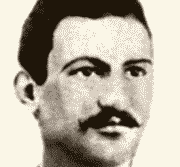
Bresci
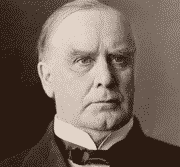
McKinley
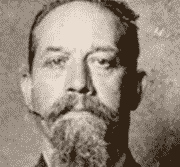
Galleani
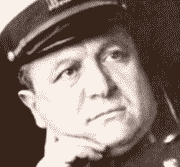
Petrosino
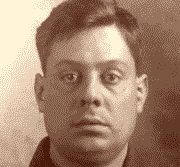
Lupo
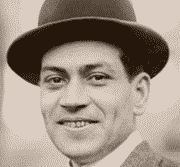
Caron
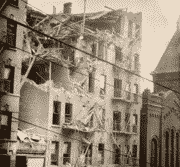
1914 explosion
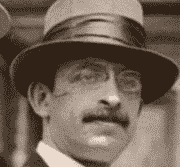
Berkman
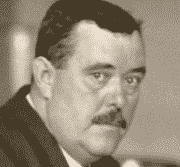
Flynn
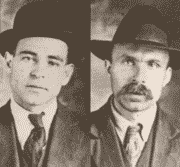
Sacco and Vanzetti
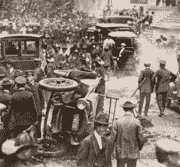
Wall St. bombing
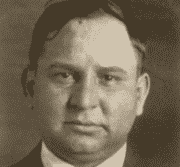
Masseria
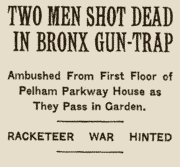
1930 mob shooting
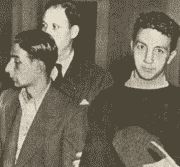
Sberna and Gati
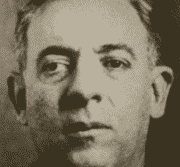
Terranova
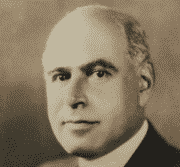
Lehman
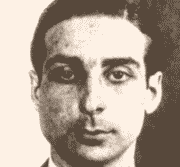
Sberna
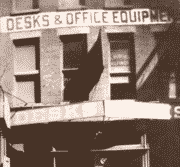
Rudisch business
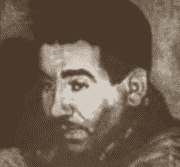
DeRenna
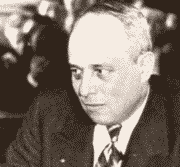
Leibowitz
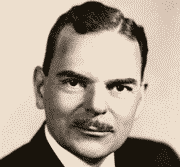
Dewey
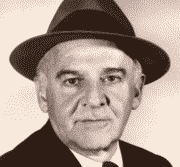
Winchell
